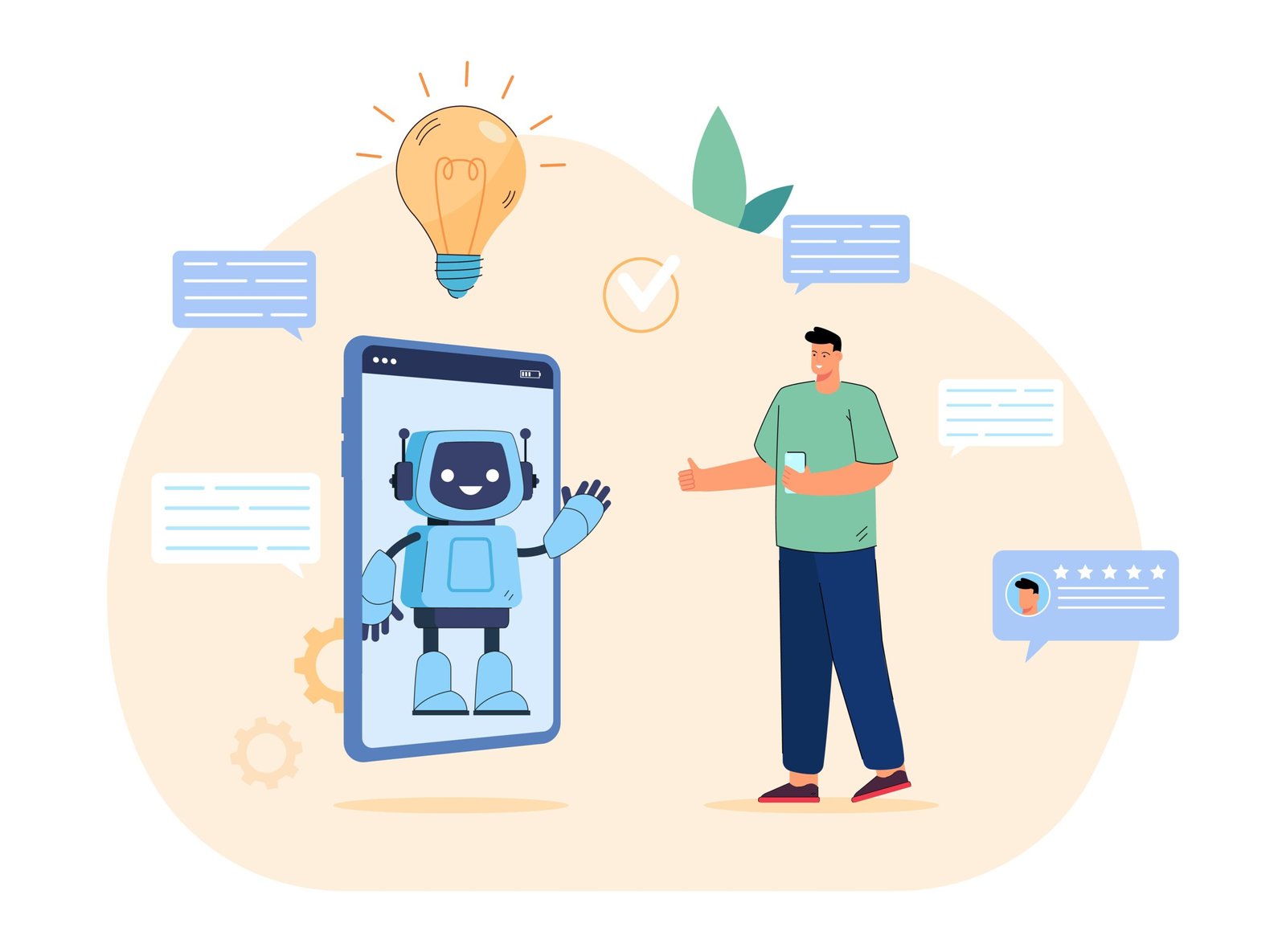If you’ve ever visited a website and been greeted by a little chat window offering to help you find what you’re looking for, you’ve likely interacted with a chatbot. But what exactly is a chatbot, and how does it work? Let’s break it down to see how these digital assistants operate and why they’ve become such a crucial tool in today’s tech-driven world. In addition to customer service tasks, many people are now excited to chat with AI characters, making the experience even more engaging.
What is a Chatbot?
A chatbot is essentially a software program that uses artificial intelligence (AI) to simulate a conversation with a human. They are designed to respond to text or voice commands in a way that feels conversational and intuitive. Whether it’s helping with customer service inquiries, guiding you through a transaction, or even having a casual chat, chatbots are widely used to interact with users efficiently and promptly.
We’ve all seen them in action, especially in customer service scenarios, but they’re not limited to just answering questions. They’ve become versatile, capable of performing tasks like booking appointments, setting reminders, and even providing personalized recommendations based on user preferences.
How Does a Chatbot Work?
Chatbots rely on natural language processing (NLP) to understand and respond to what we type or say. NLP is a field of AI that focuses on the interaction between computers and humans through natural language. In short, chatbots “listen” to what we say, break down our requests into smaller chunks of information, and respond accordingly.
There are two primary types of chatbots: rule-based and AI-powered.
Rule-Based Chatbots
Rule-based chatbots work by following a set of predetermined rules. These chatbots respond to specific commands or keywords that are programmed into them. They are straightforward but limited in scope because they can only answer based on the script they are given. If you ask a question outside their programmed rules, they’ll either fail to respond or give a generic reply like “I don’t understand your question.”
In comparison to AI chatbots, rule-based systems are great for simple tasks but fall short when conversations get more complex or when users deviate from the script.
AI-Powered Chatbots
AI-powered chatbots, on the other hand, use machine learning to continuously improve their responses. They don’t just rely on pre-programmed answers but learn from interactions over time. Through natural language processing and machine learning, they can handle a broader range of questions and even understand context, which allows for more natural conversations.
AI chatbots analyze the input, predict the most appropriate response, and adjust their replies based on what they’ve learned from previous interactions. This makes them far more dynamic and adaptive than rule-based chatbots.
Interestingly, we’re now seeing advancements where people can chat with AI characters, adding another layer of interaction. Whether for entertainment or educational purposes, this concept has taken off, offering users a unique way to engage with AI beyond basic customer service.
Key Components of Chatbots
To fully appreciate how chatbots work, it’s essential to understand the components that make them function:
- Natural Language Processing (NLP): This is the heart of any advanced chatbot. NLP allows the chatbot to interpret human language, break it down into understandable pieces, and generate an appropriate response.
- User Input: This could be text-based or voice-based. Depending on the type of chatbot, users might type in their query or use voice commands.
- Backend Systems: These include the algorithms and databases that store responses, rules, and learning patterns. AI chatbots use these systems to generate responses based on past conversations.
- Machine Learning Algorithms: For AI-powered bots, machine learning plays a significant role. The more users interact with them, the better they get at providing accurate and helpful responses.
The Uses of Chatbots
Chatbots are used across various industries and serve many purposes, from customer support to entertainment. Their ability to provide instant replies makes them ideal for businesses that need to address customer queries quickly and efficiently.
In retail, they help customers find products, track orders, and even process returns. In banking, they assist with tasks like checking balances or transferring money. Healthcare systems use chatbots to provide health advice, schedule appointments, and even send medication reminders.
Chatbots are also becoming popular in more personal areas. We now see people using chatbots for virtual companionship or even therapy-like conversations. This capability is evolving, and soon, people may not only chat with AI but also interact with tailored AI personas or characters that simulate specific traits, emotions, or interests.
Benefits of Using Chatbots
Chatbots offer a number of benefits that are hard to ignore:
- 24/7 Availability: Chatbots don’t need sleep, meaning they can assist users at any time of the day or night. This is especially useful for customer service departments that may not have the resources to operate 24/7.
- Instant Responses: With a chatbot, there’s no waiting in line for the next available agent. You get your answers right away, reducing frustration and improving user experience.
- Cost Efficiency: Admittedly, businesses save money by using chatbots because they can handle a large volume of interactions simultaneously. There’s no need to hire additional staff to manage customer inquiries.
- Personalization: AI-powered chatbots can be personalized to offer users responses that match their preferences and past behavior, making the interaction more relevant and helpful.
Potential Challenges of Chatbots
Despite their usefulness, chatbots are not without challenges. For one, rule-based chatbots can sometimes provide inadequate responses if the user asks something outside of their programming. Even though AI chatbots are smarter, they are not perfect. They can still misunderstand user input or fail to interpret nuanced language, slang, or humor.
Another potential issue lies in privacy concerns. Since chatbots often collect data to improve performance, users may be apprehensive about how their information is being used.
The Future of Chatbots
Looking ahead, the technology driving chatbots is likely to get even more sophisticated. With advances in AI and NLP, future chatbots could better understand context, emotion, and intent. Eventually, we might even see chatbots that can mimic human conversation so well that it becomes difficult to distinguish between human and AI.
Furthermore, the ability to chat with AI characters will probably become more common, allowing people to have more engaging, customized, and immersive experiences. As AI continues to develop, these characters could evolve to simulate complex emotions, provide expert-level knowledge, or even entertain us in ways we haven’t yet imagined.
Conclusion
Chatbots have made life easier in many ways, from streamlining customer service to offering personal assistance. While they have limitations, their ability to interact in real-time and handle repetitive tasks efficiently makes them invaluable in various industries. Whether we’re asking a chatbot for help or chatting with AI characters for fun, these digital tools are here to stay, constantly evolving and learning to provide better, more intuitive interactions.
The rise of chatbots signals a shift toward more AI-driven communication, and as we continue to integrate them into our daily lives, it’s clear they will play an even bigger role in how we interact with technology.



